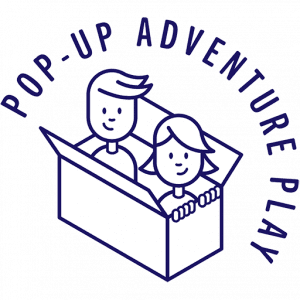Yesterday, my daughter Eliza (almost 4) and I went to work together. She had spent much of the morning quietly setting up an office in the small entranceway near our front door. When it was ready, she insisted I hurry. Mom! Don’t be late for work! We had a loose agenda, but Eliza let me choose which task I wanted to complete first, and we took a break for snack. It was pretend, but delicious just the same.

Eliza showed me how to play her lunch box counting game. This was part of my job. The objective of the game was to correctly count all of the objects in a lunch box: one small bouncy ball, one witchy-looking-princess doll, one blue matchbox car, and so on up to a total of seven objects. She showed me how to write each letter of the alphabet in an old daily planner, carefully modelling how I should write only one or two letters on each page. Mainly Eliza taught me that she is interested in what happens when she goes to school from 8:30 to 5:00 every Monday, Wednesday, and Friday and Mommy and Daddy go to work, that mysterious otherworld where adults spend so much time. By playing with her at “work,” I taught her that I am interested in her ideas and that I value her thinking process. When she asked, I also helped her write the letters R and Q.
As Eliza and I played together, we practiced listening and speaking, the balance required in a dialogue. Each of us contributed what we already knew, and we were both open to learning something we hadn’t known before. Eliza built on something she already knows (school) to explore an idea she is curious about (work). I allowed her to teach me how to be at her version of work and supported her by participating with honest interest. Essentially, there on the floor in our Eliza-made office we practiced the give-and-take art of teaching and learning in its purest, most compassionate form.
Today, when play has been banished to the edges (pushed into the spare minutes between the moments when “real” learning happens), I find myself wanting to call attention not to the empirically based connections between play and specific learning outcomes, (even though we know these exist!), but rather to the value of a play mindset in the fundamental, reciprocal process of teaching and learning.
In
The Art of Possibility, Rosamund and Benjamin Zander describe teaching through a practice they call
enrolment. “Enrolling is not about forcing, cajoling, tricking, bargaining, pressuring, or guilt-tripping someone into doing something your way.
Enrolment is the art and practice of generating a spark of possibility for others to share.”
Whether in a pretend office, a game invented on the
playground, or a curious observation explored by a team of students collaborating with their classroom teacher, children play and learn best when we
enrol them in the process and, in turn, allow children to enrol us. We generate sparks of possibility and then, well, anything is possible.
play = teaching and learning
There must be 600 different words we can associate with play.
For each post, I will choose one – in this case, two!
 Eliza showed me how to play her lunch box counting game. This was part of my job. The objective of the game was to correctly count all of the objects in a lunch box: one small bouncy ball, one witchy-looking-princess doll, one blue matchbox car, and so on up to a total of seven objects. She showed me how to write each letter of the alphabet in an old daily planner, carefully modelling how I should write only one or two letters on each page. Mainly Eliza taught me that she is interested in what happens when she goes to school from 8:30 to 5:00 every Monday, Wednesday, and Friday and Mommy and Daddy go to work, that mysterious otherworld where adults spend so much time. By playing with her at “work,” I taught her that I am interested in her ideas and that I value her thinking process. When she asked, I also helped her write the letters R and Q.
Eliza showed me how to play her lunch box counting game. This was part of my job. The objective of the game was to correctly count all of the objects in a lunch box: one small bouncy ball, one witchy-looking-princess doll, one blue matchbox car, and so on up to a total of seven objects. She showed me how to write each letter of the alphabet in an old daily planner, carefully modelling how I should write only one or two letters on each page. Mainly Eliza taught me that she is interested in what happens when she goes to school from 8:30 to 5:00 every Monday, Wednesday, and Friday and Mommy and Daddy go to work, that mysterious otherworld where adults spend so much time. By playing with her at “work,” I taught her that I am interested in her ideas and that I value her thinking process. When she asked, I also helped her write the letters R and Q.